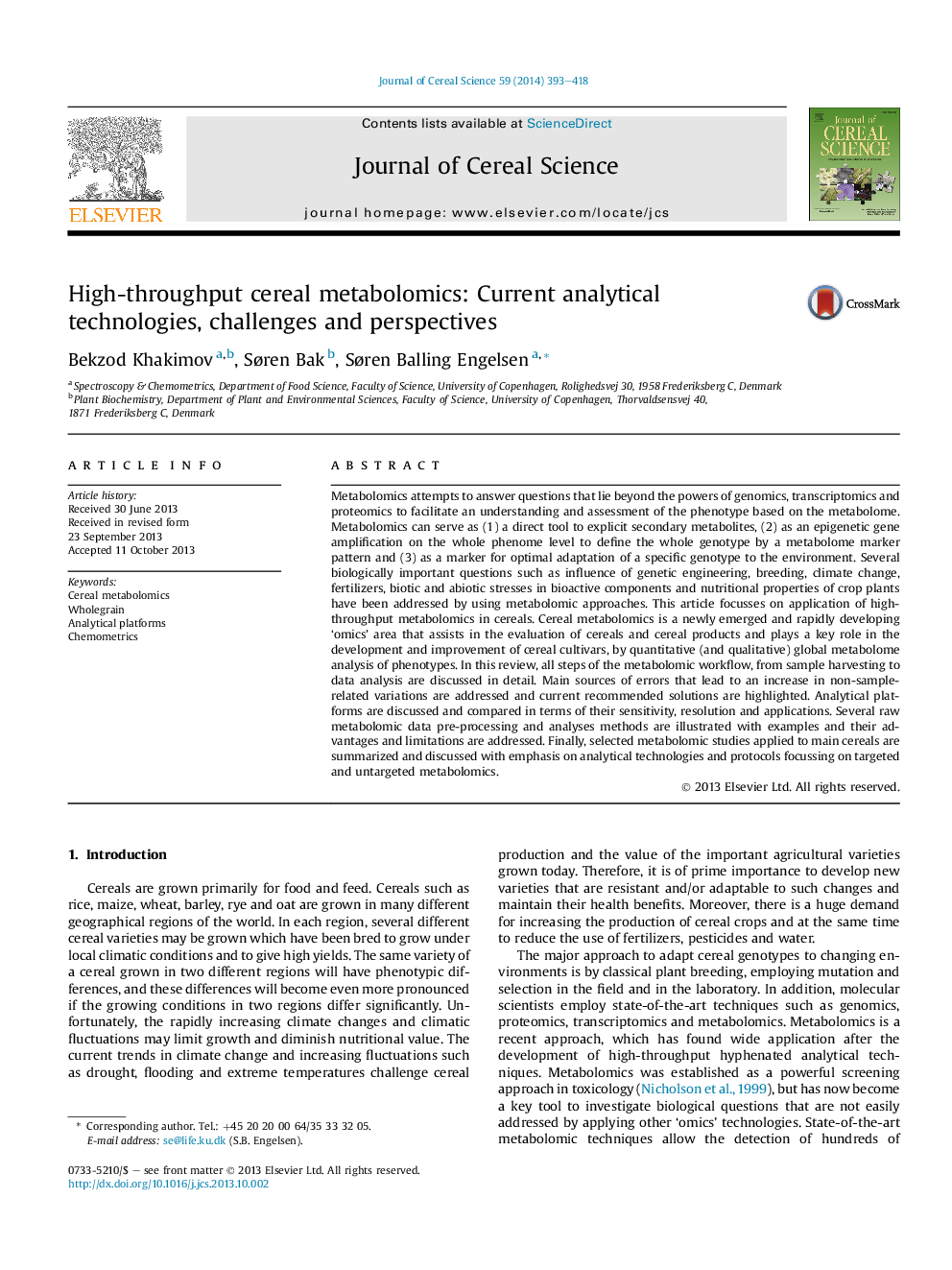| Article ID | Journal | Published Year | Pages | File Type |
|---|---|---|---|---|
| 6377992 | Journal of Cereal Science | 2014 | 26 Pages |
â¢Small molecular metabolites are one of the key determinants of the value of cereals.â¢Cereal metabolomics require unbiased, reproducible and sensitive protocols.â¢Spectrometry and spectroscopy are the most powerful tools in cereal phenomics.â¢Chemometrics assists to link the metabolome with genome and phenome of the cereals.
Metabolomics attempts to answer questions that lie beyond the powers of genomics, transcriptomics and proteomics to facilitate an understanding and assessment of the phenotype based on the metabolome. Metabolomics can serve as (1) a direct tool to explicit secondary metabolites, (2) as an epigenetic gene amplification on the whole phenome level to define the whole genotype by a metabolome marker pattern and (3) as a marker for optimal adaptation of a specific genotype to the environment. Several biologically important questions such as influence of genetic engineering, breeding, climate change, fertilizers, biotic and abiotic stresses in bioactive components and nutritional properties of crop plants have been addressed by using metabolomic approaches. This article focusses on application of high-throughput metabolomics in cereals. Cereal metabolomics is a newly emerged and rapidly developing 'omics' area that assists in the evaluation of cereals and cereal products and plays a key role in the development and improvement of cereal cultivars, by quantitative (and qualitative) global metabolome analysis of phenotypes. In this review, all steps of the metabolomic workflow, from sample harvesting to data analysis are discussed in detail. Main sources of errors that lead to an increase in non-sample-related variations are addressed and current recommended solutions are highlighted. Analytical platforms are discussed and compared in terms of their sensitivity, resolution and applications. Several raw metabolomic data pre-processing and analyses methods are illustrated with examples and their advantages and limitations are addressed. Finally, selected metabolomic studies applied to main cereals are summarized and discussed with emphasis on analytical technologies and protocols focussing on targeted and untargeted metabolomics.
